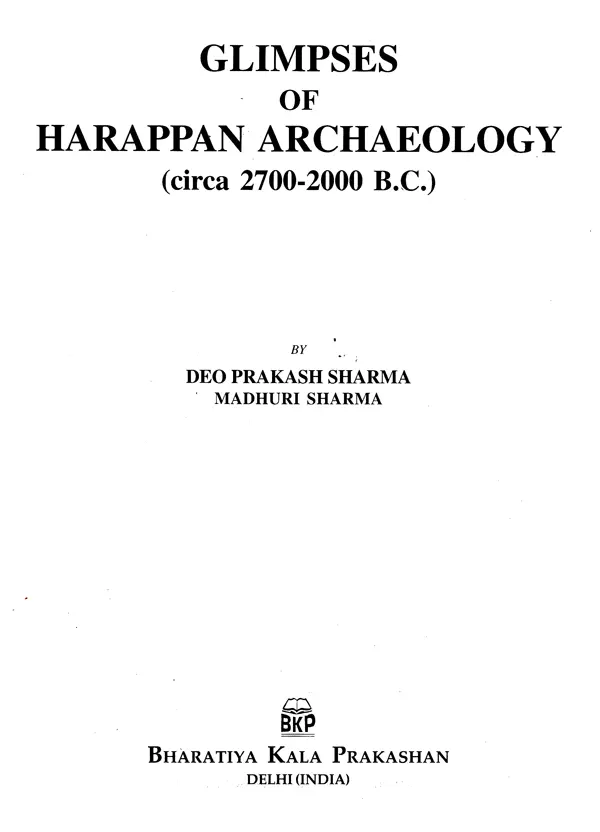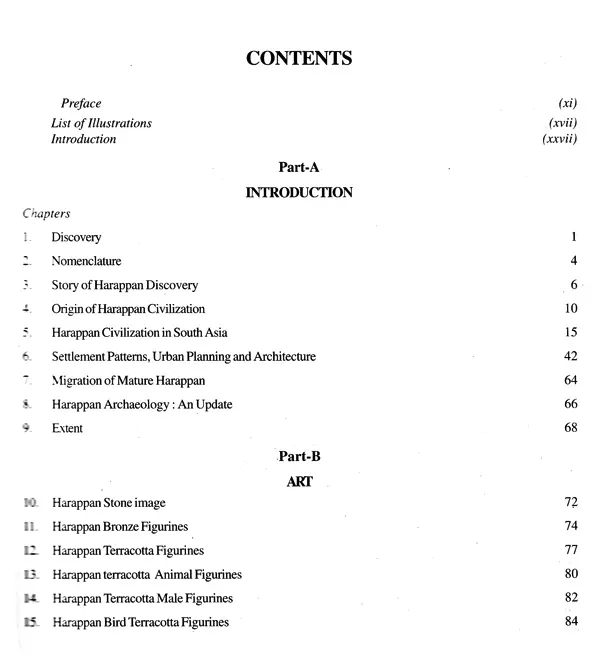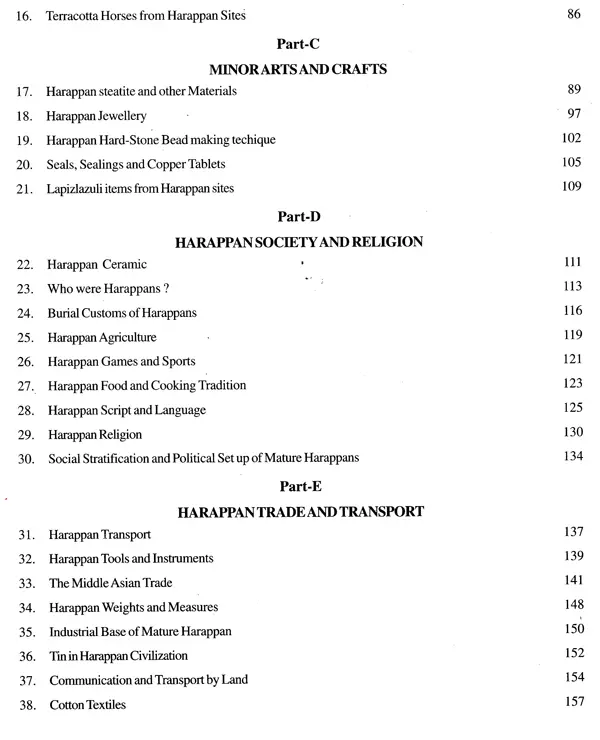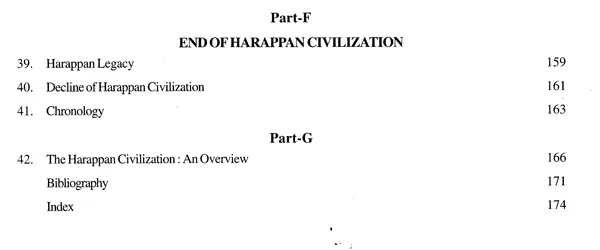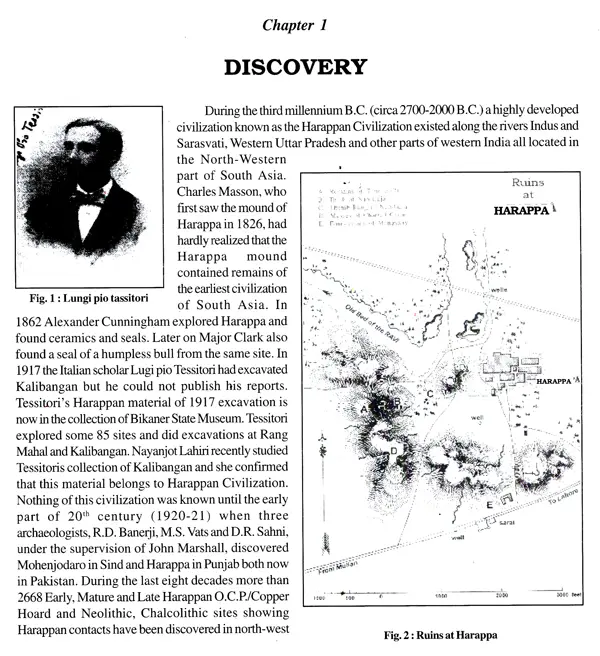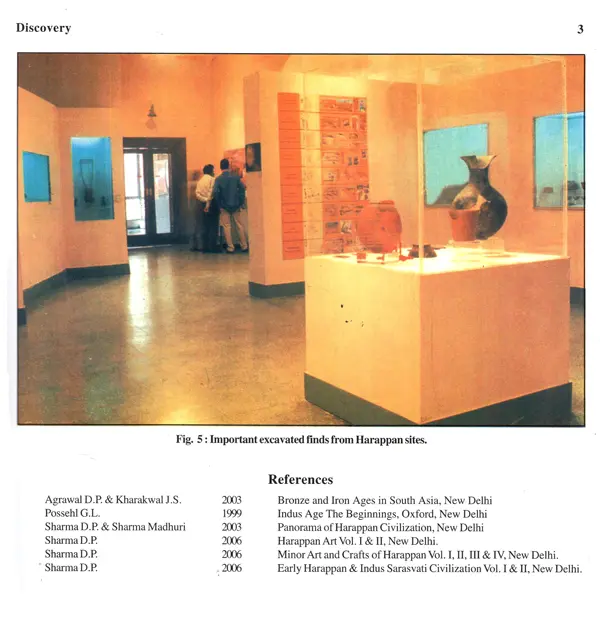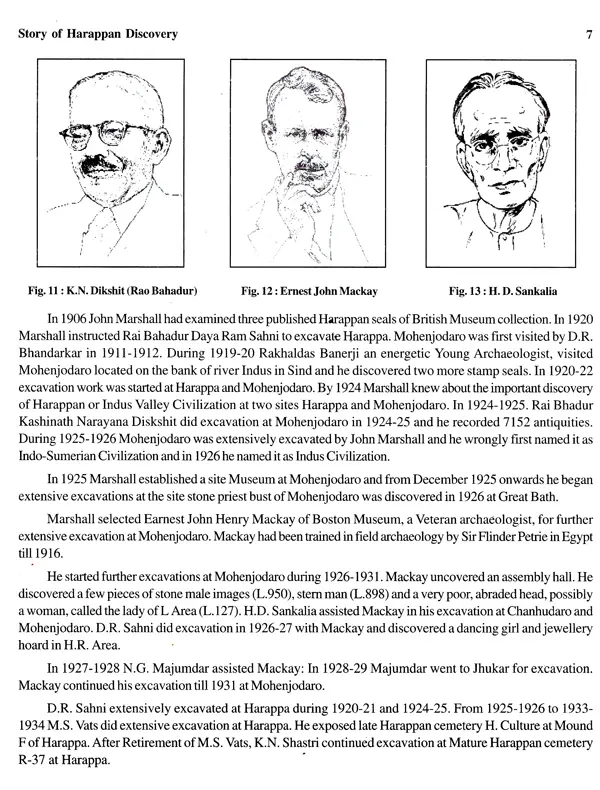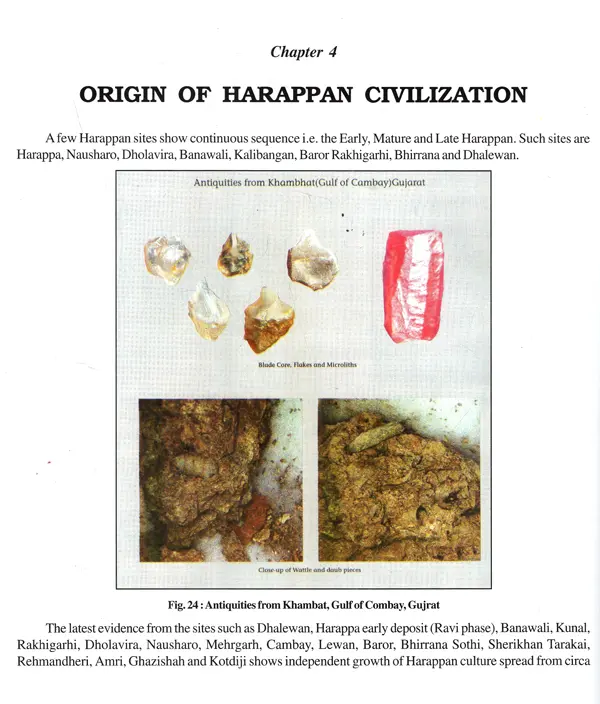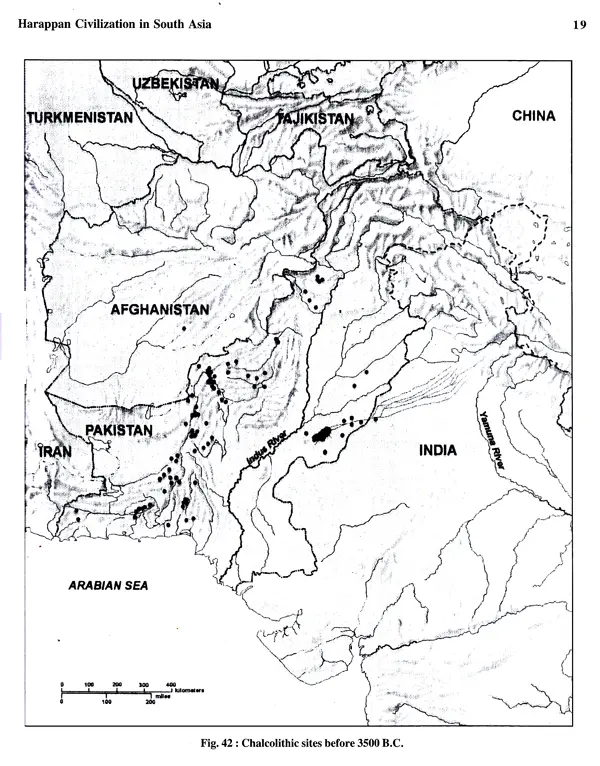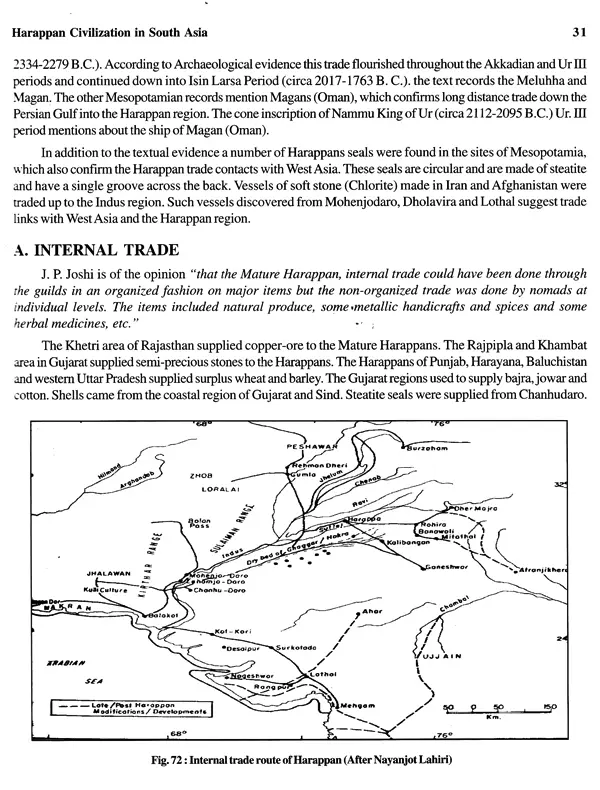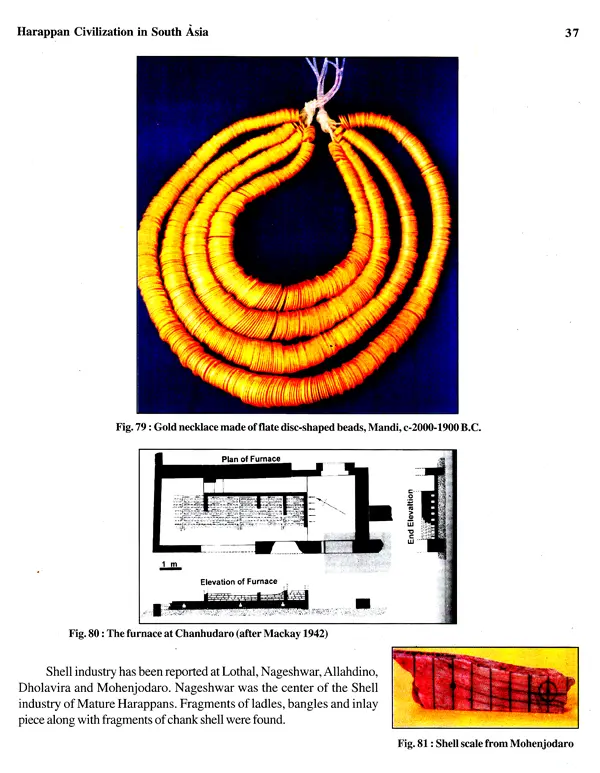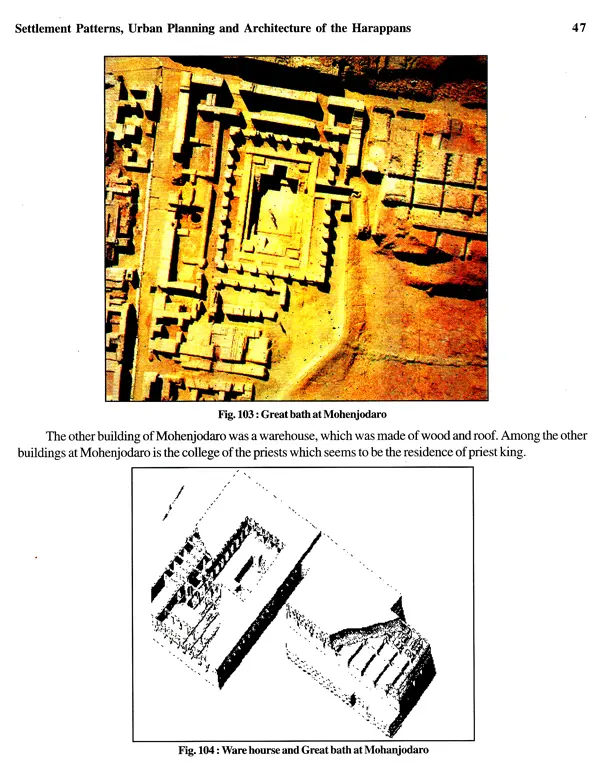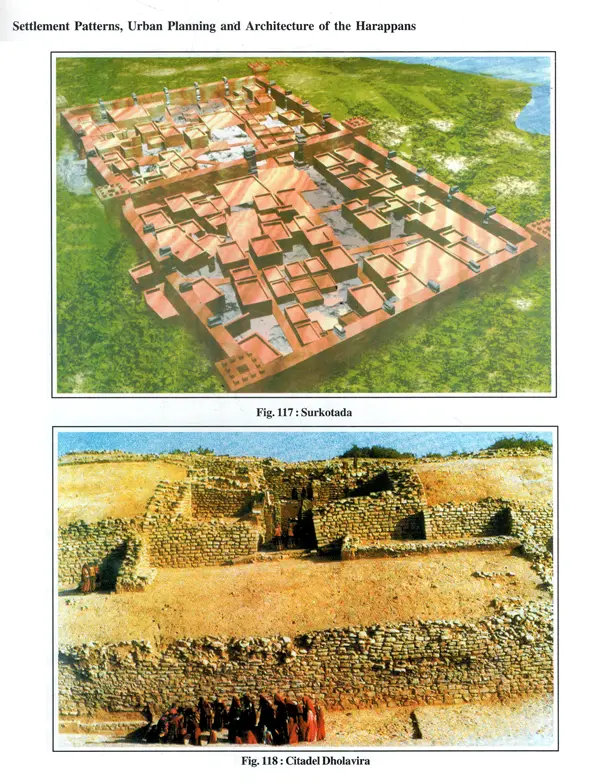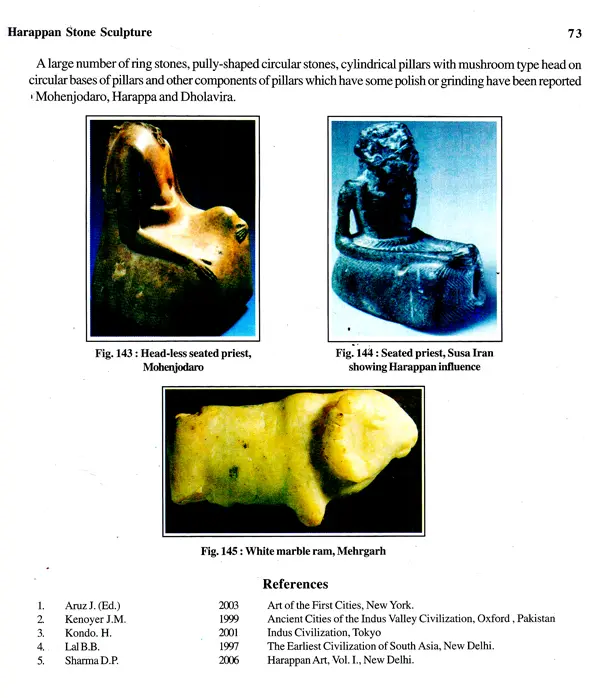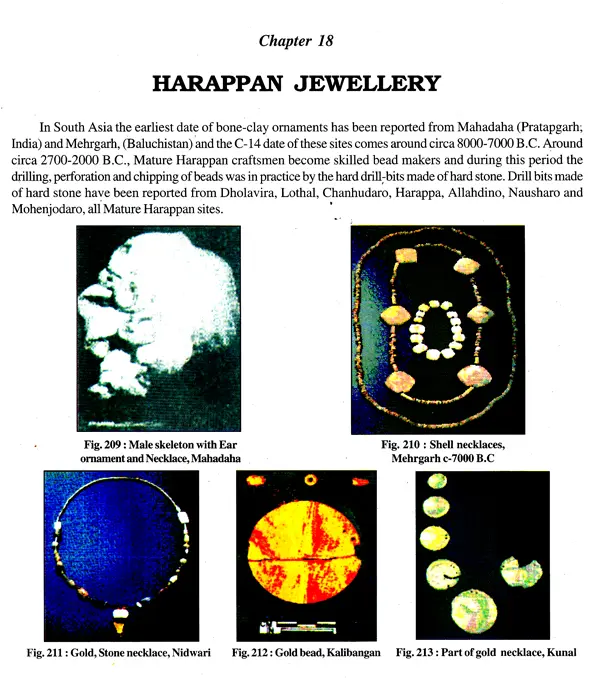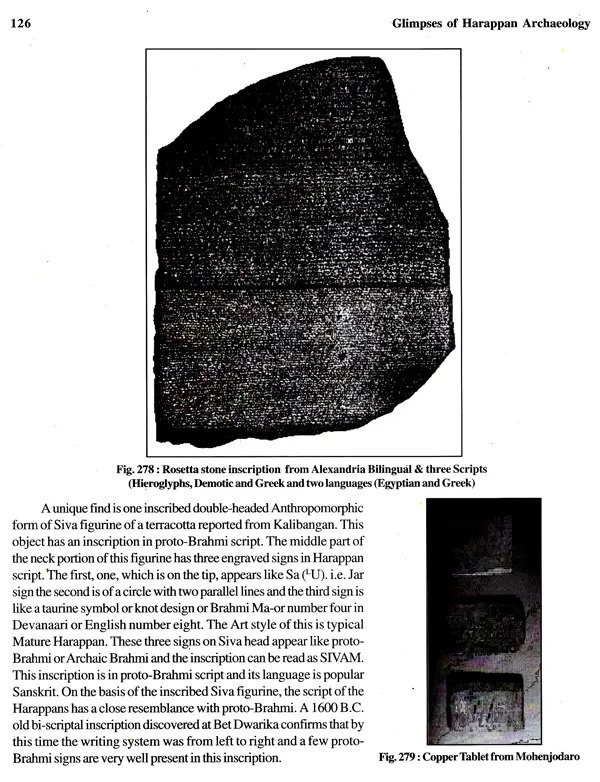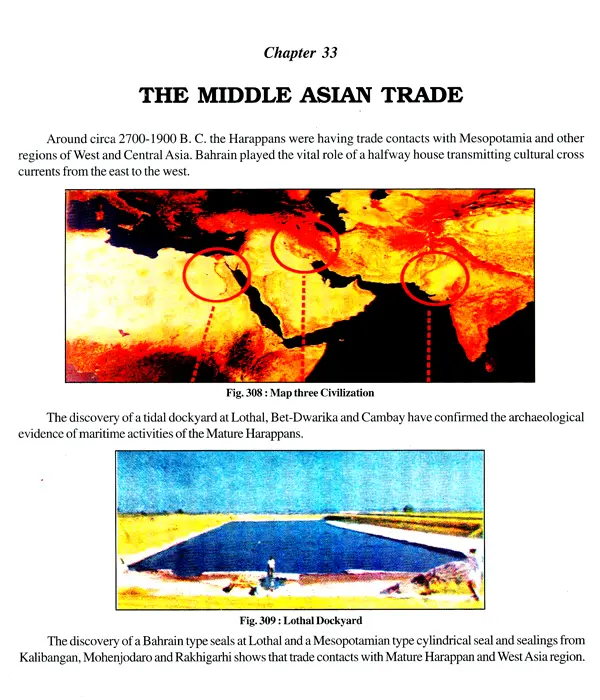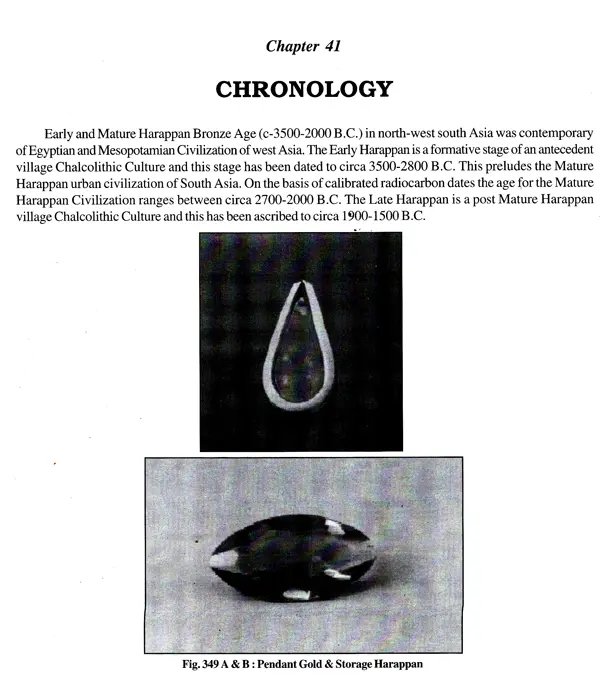
Glimpses of Harappan Archaeology
Book Specification
| Item Code: | UAN390 |
| Author: | Deo Prakash Sharma & Madhuri Sharma |
| Publisher: | Bharatiya Kala Prakashan |
| Language: | English |
| Edition: | 2006 |
| ISBN: | 8180901165 |
| Pages: | 204 |
| Cover: | HARDCOVER |
| Other Details | 11.00 X 9.00 inch |
| Weight | 1.10 kg |
Book Description
The Harappan civilization is the most appropriate term for its nomenclature. In 1917, Lugi Pi Tessitori did excavations at Kalibangan. Prof. Nayanjot Lahiri has recently confirmed that Tessitori's excavated material of Kalibangan belongs to Early and Mature Harappan age. Since then about 2668 Harappan and its associated sites have been. reported in Northwest South Asia, whereas Harappan archaeologists have excavated only 208 sites, Harappan civilization covers 1-6. million sq km, in area. The newly excavated sites of Harappan civilization are: Barror, Chak 86, Kuran, Bhirana, Mandi and Sanauli.
The Harappans used steatite, Lapis Lazuli, clay, Faience, ivory, gold, silver and camelian for their craft and jewellery items. The artisans were skilled in making bronze, terracotta and stone sculptures, most of them being handmade and very small in size. This was the beginning of first urbanization in the subcontinent with the emergence of well planned cities with massive walls and gateways, highly developed trade and transportation, agriculture and use of script and languages.
He has published 166 papers and several books, a few of which are: Harappan Terracottas; Harappan Seals: Indus Script on its Way to Decipherment: Panorama of Harappan Civilization: Bharat evam Sindhu Sabhyata (in Hindi).
At present, he is Head of the Harappan Collection, National Museum, New Delhi.
Madhuri Sharma is an Art Historian, Museologist and Archaeologist. She participated in excavation work in Narmada Valley. Chopani Mando, Belan Valley and Bharadwaj-Ashram. Apart from participation in national and international seminars, she has published 60 research papers and 8 books including 'Museum and Muscology', 'Early Buddhist Metal Images of South Asia.
This pictonal book Glimpses of Harappan Archaeology has 42 chapters. The Ist chupteris on discovery of Harappan Civilization. In 1917 the talian scholar Lagi P Tessitori did excavations at Kalibungan and the excavated materials are on display in the Bikaner Moscunt. In 1920-21 Harappa and Mohenjodaro were excited and in 1924-25 John Marshall disclosed the discovery of Bure Age Indus Valley Civilization in South Asia.
The2nd chapter is on nomenclature of this Bronge age Civilization. The term Harappan or South Asian Bronze Age Civilration is most appropriate for this Civilization. Some Scholars have stiggested Indus-Sarasvati Creslization because a large number of sites are located on the dry bank of river Sarasvati, I hardly matters if you call Indus, Haruppan or Indus saravals. It's meaning is the same.
The IIIrd clupter is on the story of Harappan discovery R.D. Harj, DR. Sahni, John Marshall, Mortimer Wheeler, KN, Dikshit. E mackay, M.S. Vat, SR Rao, B L. JP Josh, R. Mughal, JE Jarrige, GL Pacht. J.M. Kinoyer. VH. Sonawane, M.K Dharwalikar, K. Bhan, R.S. Bisht, A. Nath, Madhubala, D.V. Sharma, S. Blaan, P.K. Triveds, Ummula Sant, KC Nauryal, Subhra Prattam SAS, Nandini Bhattacharya, LS Rao, LD Dwivedi and H.P. Frankfort have done excavation on Tarappan Sites.
The IVth chapter is on the origin of Harappan Civilization. There are four developing stages in the progress of urbanization of Harappan Civilization The lavage C 8000-4300 BC preces will farming communities and pastoral camps Mehrgarh, Saraikhan Tarakai and Cambay dow the earliest stage The stage IIA C. 4300 3800 C. represents early chalcolidic Tucan phase. The sta BC300 350011 Hipersemes development of technology and the stage III-Early Raviphase C 1500-2700 BC.can be coated with Rigvedic culture and this was recently suggeted by M.S. Rajaram and D.P.Sharma in their publications
**Contents and Sample Pages**
